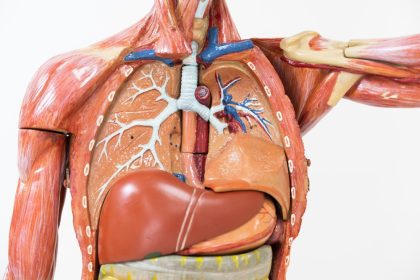The human voice represents one of our most distinctive characteristics—as unique as fingerprints yet constantly evolving throughout life. While most people recognize the obvious vocal changes that occur during adolescence or notice the general qualities of an elderly person’s speech, emerging research suggests our voices contain subtle biomarkers that may reveal cellular aging processes long before other visible signs appear. This unexpected connection between vocal characteristics and biological aging opens fascinating possibilities for non-invasive health monitoring and provides new perspectives on the aging process itself.
The biological architecture of voice production
The human voice emerges from a remarkably complex interaction of multiple biological systems, creating a potential window into overall physiological status. Voice production involves the coordinated action of the respiratory system providing airflow, the larynx (voice box) containing vocal folds that vibrate to create sound, and the vocal tract that shapes these vibrations into recognizable speech sounds. Each component contains tissues affected by aging processes at the cellular level.
The vocal folds themselves consist of multiple tissue layers—a muscular layer, a transition layer of elastin fibers, and an outer cover of epithelial cells—each responding differently to hormonal changes, oxidative stress, and other aging mechanisms. The epithelial cells undergo regular replacement cycles directly influenced by cellular health and regenerative capacity. The deeper elastin and collagen fibers experience cross-linking and structural changes similar to those in skin and other connective tissues during aging.
Surrounding structures including cartilages, muscles, and mucosal tissues all contain cells vulnerable to common aging mechanisms including telomere shortening, mitochondrial dysfunction, and protein modification. This diverse cellular architecture creates multiple pathways through which systemic aging processes can manifest in vocal characteristics, potentially before becoming apparent in other biological systems.
Vocal fold changes at the cellular level
The vocal folds undergo several cellular-level transformations during aging that directly affect voice quality and control. Among the most significant changes occurs in the lamina propria—the connective tissue layer beneath the vocal fold surface—where elastin fibers provide the critical flexibility needed for proper vibration. As cellular aging progresses, these elastin fibers undergo fragmentation and disorganization similar to what occurs in arterial walls and skin tissue during aging.
Collagen fibers within the vocal folds simultaneously experience increased cross-linking and density changes, reducing tissue pliability. These alterations in the extracellular matrix stem from the same fundamental aging mechanisms affecting other body systems: accumulated oxidative damage, glycation end-products, and declining cellular repair capacity. The result is gradually stiffening vocal tissues that vibrate differently, creating subtle acoustic changes detectable long before obvious voice alterations become apparent.
The epithelial cells covering the vocal folds face particular challenges during aging. These cells must withstand significant mechanical stress during voice production while maintaining an effective barrier against environmental exposures. Cellular aging reduces their regenerative capacity and stress resistance, potentially leading to thinner epithelial layers with altered surface properties that affect vibration characteristics and hydration status.
Acoustic biomarkers of cellular aging
Several specific vocal characteristics appear particularly sensitive to cellular aging processes, creating potential acoustic biomarkers for biological age assessment. Fundamental frequency stability—how consistently a person maintains a steady pitch—requires precise neuromuscular coordination that becomes compromised as cellular changes affect nerve conduction and muscle fiber composition. This stability can be measured through jitter (cycle-to-cycle pitch variation) and shimmer (cycle-to-cycle amplitude variation) analysis.
Harmonic-to-noise ratio represents another sensitive measure, reflecting the proportion of periodic sound (clear tone) versus aperiodic sound (noise) in the voice. This ratio gradually decreases with cellular aging as vocal fold vibration becomes less regular due to tissue changes and reduced neuromuscular precision. Sophisticated acoustic analysis can detect these changes years before they become perceptible to human listeners.
Formant frequencies—concentrations of acoustic energy created by vocal tract resonance—also shift with age due to changes in oral and pharyngeal tissues. These shifts reflect the same cellular aging processes occurring throughout the body but manifest in measurable acoustic patterns. The relationship between different formants (their dispersion and stability) appears particularly sensitive to biological aging processes rather than merely chronological age.
Cellular stress indicators in voice production
Voice production requires substantial cellular energy and creates significant oxidative stress, making it particularly sensitive to changes in cellular energy metabolism. The repeated high-velocity collisions of vocal folds during speech generate mechanical stress and free radicals that must be countered by cellular defense mechanisms. As these protective systems decline with age, subtle changes in vocal endurance and recovery appear.
The mitochondria—cellular power plants responsible for energy production—undergo characteristic changes during aging, including decreased efficiency and increased production of damaging free radicals. These mitochondrial alterations affect all energy-dependent cellular functions, including the muscle contractions required for voice production. Vocal fatigue patterns and recovery time after extended speaking may reflect these mitochondrial changes before they significantly impact other less demanding body systems.
Inflammatory markers represent another cellular stress indicator potentially reflected in voice characteristics. Chronic low-grade inflammation increases with biological aging and affects tissue composition and function throughout the body. The highly vascularized tissues of the larynx may demonstrate early responses to systemic inflammation, creating detectable changes in vocal quality and resilience before obvious symptoms appear elsewhere.
Voice-reflected hormonal influences on cellular aging
Hormones play critical roles in both voice characteristics and cellular aging processes, creating another pathway connecting vocal changes to biological age. The most dramatic example occurs during male adolescence, when testosterone surges trigger vocal fold growth and voice deepening. Less obvious but equally significant hormonal influences continue throughout adulthood, with both male and female voices responding to changing hormone profiles that simultaneously influence cellular aging mechanisms.
Estrogen receptors exist within vocal fold tissues, where they influence cellular water content, glycoprotein production, and inflammatory responses. The declining estrogen levels associated with female aging create measurable vocal changes including lowered fundamental frequency and increased instability. These same estrogen changes simultaneously affect cellular aging throughout the body through mechanisms including altered mitochondrial function, reduced antioxidant protection, and changed inflammatory responses.
Growth hormone and its mediator insulin-like growth factor-1 (IGF-1) demonstrate similar dual influences on both vocal tissues and cellular aging processes. These hormones maintain tissue health and repair capacity throughout the body while simultaneously affecting laryngeal muscle mass and vocal fold thickness. Their gradual decline during aging contributes to both vocal changes and broader cellular aging processes, potentially making voice characteristics a sensitive barometer of these hormonal shifts.
Neural control aspects of voice and aging
The extraordinary precision required for speech involves multiple brain regions and neural pathways vulnerable to cellular aging processes. Voice production requires millisecond-level coordination between respiratory, laryngeal, and articulatory systems, achieved through complex neural networks. As cellular aging affects neurotransmitter production, myelin integrity, and synaptic function, subtle changes in vocal control often emerge before obvious neurological symptoms.
Voice onset time—how quickly vocal folds begin vibrating after articulation movements—provides one measurable aspect of this neural coordination. This parameter shows characteristic changes with cellular aging as neural transmission and muscle response speeds alter. Similarly, the ability to maintain precise pitch control during extended vowels requires continuous feedback between auditory processing and motor control centers, a relationship affected by cellular changes in both sensory and motor systems.
The cerebellum, essential for coordinating complex movement sequences including speech, shows particular sensitivity to cellular aging processes. Cerebellar Purkinje cells exhibit some of the body’s highest metabolic rates, making them vulnerable to mitochondrial dysfunction and oxidative stress that increase with age. Voice quality measures related to movement precision and coordination may reflect these cerebellar cellular changes before they manifest in more obvious motor symptoms.
Voice changes preceding visible aging signs
Particularly intriguing is evidence suggesting that vocal parameters may shift before more visible aging biomarkers appear. The consistent mechanical stresses placed on vocal tissues accelerate cellular aging responses that might develop more gradually in less frequently stressed systems. Additionally, the voice’s complex integration of multiple biological systems creates numerous pathways through which early cellular aging can manifest acoustically.
Several vocal characteristics appear to change notably between ages 30-40—decades before obvious external aging signs—including subtle shifts in harmonic structure, reduced frequency range, and altered vocal fold closure patterns. These changes correlate with early cellular aging mechanisms including the beginnings of collagen cross-linking, initial declines in cellular repair efficiency, and the first measurable reductions in certain hormones that support tissue maintenance.
The voice’s sensitivity as an aging biomarker may stem from its evolutionary importance for human communication and survival. The substantial neural resources devoted to voice control create multiple redundant systems that maintain function despite initial cellular aging, but this redundancy ironically makes subtle compensatory changes detectable through sophisticated acoustic analysis before function noticeably declines.
Lifestyle influences on vocal-reflected aging
The vocal mechanism’s sensitivity to cellular aging creates opportunities for observing how lifestyle factors influence aging trajectories. Hydration status immediately affects vocal fold surface properties and vibration characteristics, while simultaneously influencing cellular aging through effects on metabolism and waste removal. Proper hydration creates measurable improvements in vocal acoustic parameters that reflect the same cellular benefits occurring throughout the body.
Oxidative stress—a key driver of cellular aging—dramatically affects voice production due to the high metabolic activity of laryngeal tissues. Dietary antioxidants that counter systemic oxidative damage show measurable effects on vocal acoustic parameters, particularly regarding recovery after vocal loading (extended speaking). These vocal changes likely reflect the same cellular protection occurring in less accessible tissues throughout the body.
Sleep quality demonstrates similar dual influences on both voice characteristics and cellular aging. Inadequate sleep creates immediate measurable changes in vocal stability and harmonic structure while simultaneously accelerating cellular aging through mechanisms including increased inflammation, reduced cellular repair, and hormonal disruption. The voice potentially serves as a sensitive readout of how sleep patterns affect cellular health before more obvious symptoms develop.
7 indicators your voice reveals about cellular health
- Analyze morning voice quality fluctuations as potential indicators of systemic inflammation and cellular stress. The voice typically sounds deeper and rougher upon waking due to mild vocal fold swelling from recumbent position and reduced activity. However, excessive morning voice changes—particularly when they take unusually long to resolve—may indicate increased inflammatory markers and fluid retention reflecting cellular stress. Monitor how quickly your voice clears after waking, as prolonged morning hoarseness may indicate higher systemic inflammation affecting cellular health throughout your body.
- Evaluate vocal endurance changes that might reveal mitochondrial efficiency status. The ability to speak for extended periods without vocal fatigue relies on cellular energy production and recovery capacity. Declining vocal stamina—needing more breaks during long conversations or experiencing voice changes after speaking less than previously—may indicate mitochondrial changes affecting cellular energy throughout your body. This parameter proves particularly relevant because mitochondrial dysfunction represents a primary hallmark of cellular aging across all tissues.
- Monitor recovery speed after voice use as a window into cellular repair capability. How quickly your voice recovers from heavy use (presentations, loud environments, extended conversations) reflects your body’s cellular regeneration efficiency. Longer recovery periods suggest declining cellular repair mechanisms that likely affect other body systems similarly. This recovery metric potentially offers earlier indications of changing cellular resilience than standard biomarkers, as vocal tissues face daily stress that accelerates cellular aging responses.
- Track pitch stability during sustained vowels as a measure of neuromuscular aging. Maintaining a steady pitch during a held vowel sound (“ahhhh”) requires precise neural control and stable muscle function. Increasing wavering or instability during this simple exercise indicates cellular changes affecting either neural transmission or muscle fiber composition. These same cellular mechanisms influence coordination throughout your body but may manifest first in the highly precise vocal system.
- Assess voice changes during stress responses as indicators of autonomic nervous system health. The voice rapidly reflects stress activation through subtle changes in muscle tension, breathing patterns, and vocal fold pressure. How dramatically your voice alters during stress—and how quickly it returns to baseline afterward—may indicate your autonomic nervous system’s resilience and recovery capacity, factors directly linked to cellular aging processes and inflammation regulation throughout your body.
- Observe hydration response patterns in your voice as potential markers of overall cellular hydration status. The voice responds quickly to changing hydration levels, with dehydration creating measurable acoustic changes within hours. How dramatically your voice alters with dehydration—and how quickly it responds to rehydration—may indicate your overall cellular hydration efficiency. This parameter matters because optimal cellular function requires proper hydration at the cellular level, with implications for cellular aging throughout all tissues.
- Evaluate high-frequency harmonic changes that reflect the subtlest aspects of vocal fold function. The highest harmonics in your voice—overtones creating vocal “brightness” or “resonance”—depend on perfect vocal fold closure and mucosal wave movement. These harmonics diminish with early cellular aging as tissues lose optimal elasticity and surface properties change. Regular attention to the “richness” or “brilliance” of your voice may reveal early tissue changes reflecting similar cellular processes occurring throughout your body.
Practical applications and future possibilities
The connection between vocal characteristics and cellular aging opens fascinating possibilities for health monitoring and aging research. Voice analysis offers several compelling advantages: it’s non-invasive, requires no specialized equipment beyond a quality microphone, can be performed remotely, and potentially provides real-time feedback on cellular health fluctuations. These qualities make voice assessment particularly valuable for longitudinal monitoring as emerging technologies make sophisticated analysis increasingly accessible.
Artificial intelligence approaches to vocal analysis are rapidly advancing, with machine learning algorithms identifying subtle patterns undetectable by human listeners. These systems can potentially integrate multiple vocal parameters to create comprehensive aging biomarker profiles more sensitive than single measurements. The development of smartphone-based voice analysis applications may soon allow individuals to track their own vocal biomarkers over time, creating personalized baseline data for detecting significant changes.
Future applications might include using voice analysis to assess the effectiveness of anti-aging interventions at the cellular level. Because vocal parameters can be measured repeatedly without invasive procedures, they offer advantages over blood-based biomarkers that require regular sample collection. This approach could prove particularly valuable for evaluating how lifestyle modifications, nutritional approaches, or therapeutic interventions affect cellular aging trajectories over extended periods.
The unexpected connection between vocal tone and cellular aging illuminates how our bodies function as integrated systems where changes in any component may reflect broader biological processes. The voice’s sensitivity to cellular aging stems from its remarkable complexity and the constant stresses of daily speech that accelerate aging responses. By understanding this connection, we gain both a potential window into our own aging processes and a deeper appreciation for the extraordinary biological mechanisms that create human speech. As research in this area advances, our voices may reveal not just who we are, but the cellular processes shaping our health and longevity.
















